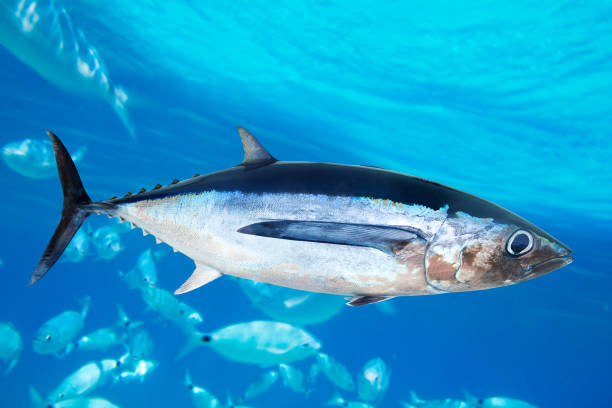Table of Contents
Scientific Classification
| Kingdom | Animalia |
| Phylum | Chordata |
| Class | Actinopterygii |
| Order | Scombriformes |
| Family | Scombridae |
| Genus | Thunnus |
| Species | Thunnus atlanticus |
| Scientific Name | Thunnus atlanticus |
1. Description
The blackfin tuna (Thunnus atlanticus) holds the title of the smallest tuna species, and it’s quite the athlete in the ocean! Known for its impressive speed and strength, this fish is a key player in both commercial and recreational fishing. With its sleek design, the blackfin is built for swift movement. It boasts a striking metallic dark blue to black back, silvery sides, and a light golden stripe that runs along each side. Its name comes from the unique dark coloring on its dorsal and anal fins.
Typically, adult blackfin tunas measure between 2 to 3 feet in length and weigh around 20 to 30 pounds, but under the right conditions, they can grow up to 45 pounds! Their streamlined bodies are perfect for cutting through the water with ease, allowing them to maintain speed during long migrations or when dodging predators.
What truly sets this fish apart is its captivating blend of beauty, strength, and ecological importance. It plays a crucial role in the marine food web and is a prized catch for sportfishers, thanks to its thrilling fight and delicious flavor.
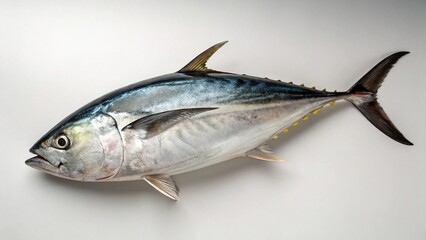
2. Distribution
Blackfin tuna are found only in the western Atlantic Ocean. Their territory stretches from Massachusetts in the north, through the Gulf of Mexico and the Caribbean Sea, all the way down to Brazil. These fish prefer tropical and subtropical waters, and you can often spot them around the Florida Keys, the Bahamas, Cuba, and the Yucatán Peninsula.
Unlike their bigger relatives, blackfin tunas don’t embark on long migrations across oceans. Instead, they are more like local travelers, adjusting their movements with the changing seasons. They tend to follow shifts in temperature and the availability of food.
3. Habitat
These fish prefer warm, epipelagic waters and typically hang out in areas that are less than 300 feet deep. This depth allows sunlight to penetrate, which in turn supports phytoplankton and the entire food chain. Blackfin tuna are usually found in offshore waters close to the continental shelf, but they can also venture nearer to the coast when baitfish are abundant.
They really thrive in warm, clear waters that range from 73°F to 84°F. You’ll often spot blackfins near floating debris, along weed lines, or at the edges of currents, where they can find both food and shelter.
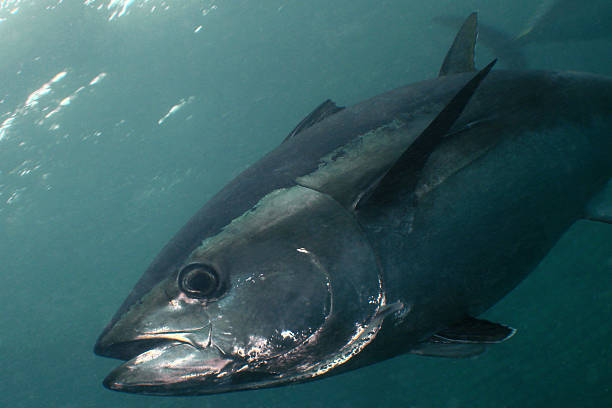
4. Diet
Blackfin tuna are opportunistic eaters, relying on their impressive speed and agility to catch their prey off guard. Their diet is quite diverse, featuring a variety of marine life, including:
– Small schooling fish like sardines, anchovies, and herring
– Cephalopods, especially squid
– Crustaceans such as shrimp and crabs
– Larval and juvenile fish during spawning seasons
These fish often hunt in groups and can create quite a spectacle with their feeding frenzies near the surface, typically occurring in the early morning or late afternoon. Thanks to their sharp eyesight and quick reflexes, they are highly effective predators.
5. Behavior
Blackfin tuna are quite the social creatures! They tend to swim in schools that are similar in size and age, which not only helps them avoid becoming someone else’s dinner but also increases their chances of a successful hunt. These fish are most active during the day and often migrate within their habitats.
You might be surprised to see blackfin tuna leaping out of the water. They do this when they’re chasing after prey or trying to escape from predators. Their swift, darting movements are powered by a strong tail fin and a sleek body design.
When it comes to feeding, they sometimes team up with other predatory fish like dolphinfish (mahi-mahi) and bonitos. Their combination of intelligence and speed makes them a challenge for anglers and an essential part of ocean ecosystems.
6. Lifespan
Blackfin tunas have a pretty short lifespan when you compare them to other tuna species. Typically, they live around 5 years, although some lucky ones might make it to 6 or even 7 years if conditions are just right.
What makes up for their brief time on this planet is their rapid growth and early maturity. They usually reach maturity at about 1 to 2 years old, which allows them to reproduce quickly. This is fantastic for keeping their population numbers healthy!
7. Reproduction and Lifecycle
Spawning mainly happens in the spring and summer months, with the busiest times being June and July. In warmer areas like the Gulf of Mexico, you might even see spawning almost all year long. Female blackfin tuna are incredibly prolific, releasing anywhere from hundreds of thousands to over a million eggs in each spawning cycle.
Fertilization occurs outside the female’s body, as males release sperm into the water to fertilize the floating eggs. These eggs hatch within 24 to 48 hours, giving rise to tiny larvae that drift along with the ocean currents.
Juvenile blackfins grow at an impressive rate, reaching a few pounds in just a matter of months. As they mature, they start to form schools and venture into deeper waters. The early stages of their lives are critical for their survival, as many fall prey to larger fish and seabirds.
8. Predators
When it comes to blackfin tuna, they may be quick and agile, but they have their fair share of natural enemies:
– Bigger fish like marlin, wahoo, and sharks are always on the lookout for a meal.
– Seabirds, including gannets and frigatebirds, especially target them during their early life stages.
– Marine mammals like dolphins are skilled at rounding up schools of small tuna for a feast.
And let’s not forget about humans! Blackfin tuna are highly prized by both commercial and recreational fishermen, thanks to their delicious, lean meat that keeps the demand soaring.
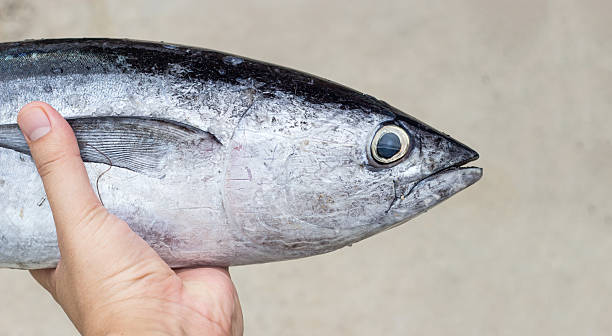
9. Adaptations
Blackfin tuna are equipped with a variety of biological and behavioral traits that help them survive in their environment:
– Streamlined body: This design cuts down on drag, allowing them to swim at high speeds.
– Counter-shading coloration: With a dark top and a lighter bottom, they can easily blend in with their surroundings, making it harder for predators to spot them from above or below.
– Endothermic capabilities: They have a limited ability to regulate their internal temperatures, which can boost their muscle performance when needed.
– Schooling behavior: By swimming in groups, they not only enhance their safety but also improve their foraging efficiency.
– Sharp vision: Their keen eyesight enables them to hunt effectively in clear waters.
These adaptations allow blackfin tuna to thrive in a competitive ecosystem, maintaining their status as effective predators despite their smaller size.
10. Conservation Status
The International Union for Conservation of Nature (IUCN) labels the blackfin tuna as Least Concern. However, that status doesn’t mean they are free from threats.
Major concerns include:
- Overfishing: Particularly in areas where regulations are weak or absent
- Bycatch: Accidental capture in non-target fisheries
- Habitat degradation: Pollution and climate change affecting spawning grounds and food chains
The United States, Mexico, and the Caribbean are working to monitor blackfin populations. They are also setting catch limits. In some places, especially in sport fishing, there are voluntary size and bag limits. These limits help support sustainable practices.
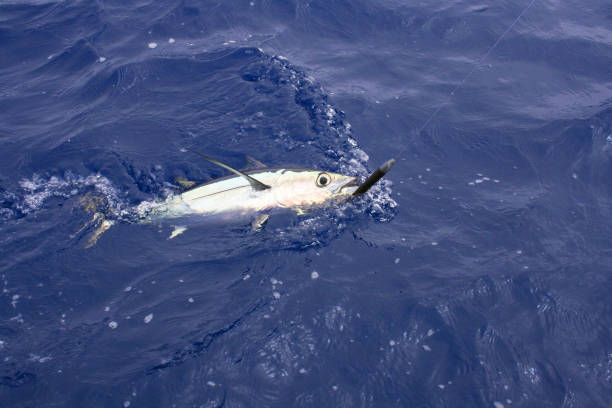
Conclusion
The blackfin tuna is the smallest member of its family, yet it plays a vital role in both our environment and economy. With its quick movements and fierce demeanor, this fish is truly captivating in the tropical Atlantic. It’s an essential part of marine ecosystems.
The journey of the blackfin tuna is one filled with strength and vitality. From the exhilarating feeding frenzies at sunrise to the excitement of being caught by sport fishers, this fish offers a thrilling experience.

